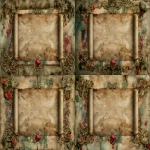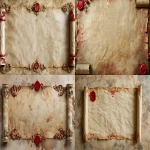Explore the Best AI Image Gallery

The Role of AI Images in Redefining Design Practices
In recent years, artificial intelligence has made significant inroads into various industries, and design is no exception. AI images, created through sophisticated algorithms and models, are reshaping how designers approach their work, influencing everything from graphic design to product development. As we explore the impact of AI on the creative industry, we will delve into its practical applications, ethical considerations, and the future of design driven by artificial intelligence.
The Impact of AI Images on the Creative Industry
AI-generated images can streamline labor-intensive processes, enabling designers to focus more on concept development and less on execution. For instance, AI tools such as DALL-E and Midjourney allow designers to input textual descriptions and receive high-quality images in return. This capability opens up numerous opportunities for ideation and brainstorming sessions, making it easier to visualize concepts at a faster pace.
Moreover, AI can assist in creating personalized designs at scale. When used for marketing materials or product customization, AI algorithms can generate tailored graphics that speak directly to individual preferences and behaviors. As a result, campaigns can become more engaging and effective, meeting target audiences where they are.
Potential Uses of AI Images in Design
The versatility of AI images enables their application across a wide range of design fields:
- Graphic Design: Graphic designers can leverage AI to quickly generate posters, social media visuals, and branding elements, thus vastly reducing turnaround times while maintaining quality.
- Product Design: In product development, AI-generated images can visualize new concepts, helping teams test and iterate designs efficiently before moving to physical prototypes.
- Fashion Design: AI tools can simulate fabric patterns and apparel designs, enabling fashion designers to experiment with aesthetics that are both innovative and market-ready without labor-intensive sketches.
- Architecture: In architecture, AI can help create photorealistic renderings of designs, allowing clients to visualize spaces before construction begins, leading to better decision-making.
Ethical Considerations
While AI images present numerous advantages, they also pose significant ethical challenges that the creative industry must navigate. The creation and use of AI-generated content raise important questions around copyright, ownership, and authenticity:
- Copyright Issues: As AI generates images that are often based on existing works, questions arise regarding the copyright of the resulting creations. Who owns the copyright—the programmer, the user, or the AI itself?
- Authenticity and Creativity: As AI-generated content becomes more sophisticated, it blurs the lines of traditional artistry. This raises concerns about what constitutes genuine creativity and whether AI can replace human intuition and emotion in design.
- Bias in Algorithms: AI systems can inherit biases present in their training data, leading to images that may perpetuate stereotypes or exclude certain demographics. Designers must be vigilant in addressing these biases.
The Future of AI in Design
The future of AI images in design is poised for growth and transformation. As technology develops, we can expect:
- Greater Collaboration: Designers and AI will increasingly collaborate, with AI serving as a creative partner that enhances human creativity rather than replacing it.
- More Accessible Tools: As AI tools become more user-friendly, a wider audience of creators—including those without formal design training—will be able to express their visions without needing extensive skills.
- Crisis Response Design: AI can also play a role in urgent design needs, helping to produce materials during critical moments, such as public health campaigns or disaster responses.
- Ethical Frameworks: Developing ethical guidelines surrounding AI-generated content will be integral to ensuring that the creative industry harnesses this technology responsibly.
In conclusion, the integration of AI images into design practices marks a new era of creativity that balances innovation with ethical considerations. As the industry continues to evolve, it is crucial for designers, technologists, and lawmakers to collaborate in shaping a future where AI enhances rather than compromises the integrity of artistic expression. Embracing these technological advancements can unlock new possibilities and elevate the design landscape, ensuring that creativity flourishes in a digital age.




](https://images.ai-img.art/thumbnails/150/7599c9e7507c77a975081d554947c9dea123e678a7ece42d30f571f639620598.webp)

](https://images.ai-img.art/thumbnails/150/efd8a9ad06ef2c72e3378698ad5e592d3d2bf8eff85c25e75db7c9902c7be353.webp)


](https://images.ai-img.art/thumbnails/150/031692dcf8fbf869092e8cea50f9411a45dadc1f189ea67b8dece8e02952a7e3.webp)


